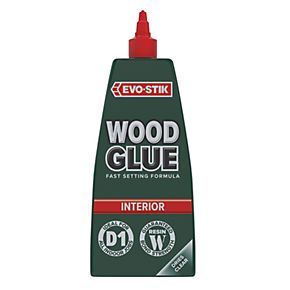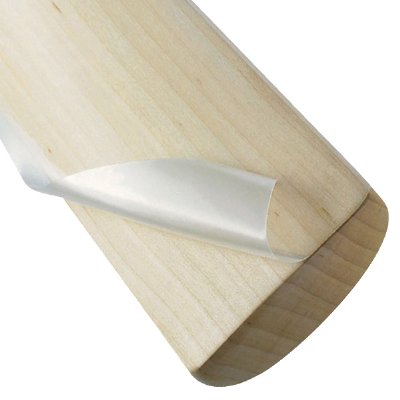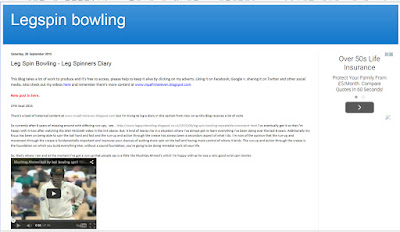This blog has now been moved to my new website.
www.wristspinbowling.com
Click the link to check it out.
This is one of a number of blog posts where I'm looking at Kashmir bats and whether they really are that bad? There's loads of opinion out there about how bad they are, but very little in the way of explanations and evidence. I'm testing out three this season, knocking them in over the winter and then I'll be using them in the nets and over the season in 2016. (See bottom of the blog for the other 2 bats).
Bat 2-11 -
This is a bat from India bought from Ebay from 'Bargain Megashop'. Advertised as...
"Senior Custom plain hand made English Willow cricket bat 2lb 9oz".
I took the information with a pinch of salt as my first Ebay bat was not as described when I bought it, so I expected the same again and indeed that was the case. This bat caught my eye as it looked as though it was going to come with a massive middle and yet only weigh 2lbs and 9oz.
Interestingly the advert says that the bat is "Hand Made English Willow Bat 2lbs 9oz". So I was interested in how they could afford to import English Willow, then shape it and then send it back to the UK all for £32.99 using UPS.
I ordered the bat on Sunday night and by Wednesday it had been delivered by UPS and on Ebay the whole process was tracked very efficiently far more so than companies like Sportsdirect. The bat was wrapped simply but quite efficiently - bubble wrap and cardboard, but around the bat as opposed to a big box with a bat rattling around inside it like Sports Direct do. The delivery man said - I'm guessing someone's getting a cricket bat for Christmas, that's how obvious it was. The bat was destined to be a Christmas gift.
Having received it I got it out of the wrapping and had a look at it. The first thing that struck me was that fatness of the bat... It wasn't as indicated by the photograph...
The image here looks as though the bat is going to be at the meatier end of the thickness range in the region of 45mm thick, but it's not. I thought maybe they've got round that by shooting the bat from this angle and it therefore exaggerates the thickness. I had a look and no it doesn't, so this is a bit of a con.
The bat arrived in November - so what have I got for my £30?
The reality is that the bat weighs just a little over 2lb 11oz, so no-where near the weight indicated in the advert or what was ordered. As for it being English willow, I'm sceptical, I doubt very much it's English willow in the true sense, but there might be some way that they might claim it being English willow see here.
Looking at the willow itself - there are loads of grains, butterfly marks and knots. Which I'm not overly worried about as they're not that much of an issue according to JS Wright and sons - suppliers of real English Willow see here. I'm assuming the same rules will apply to Kashmir willow? As for the fatness of the bat at the sweet point...
Not quite as indicated in the advert above. The image in the advert has the edge of the bat making up almost 3/4 of the overall thickness of the bat whereas the actual bat is just a little over half the thickness of the bat. But as I've said I kind of expected these things and at the moment I'm not bothered. The bigger picture will pan out over the coming season/year e.g. what will the bat play like and how will it last?
Dec 25th 2015 - (25 minutes of prep).
I've now had the bat in the garage waiting for Christmas to hand over to my son Joe as a Christmas present. Over the last month I've lightly oiled the face of the bat 3 times, with a week in between each oiling using raw Linseed oil. I've also oiled the back of the bat twice again with a light layer of oil and the bats been stored with the oiled side facing up so that the oil seeps through using gravity.
The bat was handed over to my son Joe this morning and received with ample gratitude, so while he then focused on loading up his XBOX 1, I started the bat preparation...
The bat came with ridiculously sharp edges which in the past I would have knocked in gently using a bat mallet, but I've recently seen videos where it's been suggested that an better approach is to roll the edges flat using another piece of rounded wood. People have suggested using a bat cone. I've used a pastry roller...
Using the roller with initially a light handed approach I've just simply run the rounded roller against the sharp edge of the new bat increasing the force as the edge became more rounded. The end result after about 10-15 minutes is as below...

Since rounding the edges off with the roller I've made a start on knocking it in with a bat mallet. So far I've managed about 25 minutes of preparation during which everyone complained about the noise. I've focused on the edges knocking them in very gently striking them at no more than 45 degrees, trying to hit the face of the bat rather that the side of the bat. I've also done some very light tapping on the toe, but the toe being one of the thinnest points of the bat sounds horrible when striking with the hammer and worries me. I've said previously that it might be better to remove the toe and treat in exactly the same way as the edges of the bat, but the rubber toe guards are very difficult to remove, so I've left it and at the moment I'm only striking the front surface of the bat in the toe area.
Other than that, the bat has a fairly nice pick up and when you strike the sweet spot with the bat mallet it has a nice ping to it, similar to the feel when hitting some of my older grade 1 English Willow bats with 6 or 7 grains.
Progress and observations 27th Dec
I find this a very tedious business - knocking in and no-one else around you appreciates the noise you make so I tend to do it for short periods in the garage. On this bat I've managed to do nearly 50 minutes in just a couple of days, I record how much time I do on a bit of paper I keep with the bat which might sound a bit over the top, but I just want to see how much of an affect it has on the bats longevity if treated properly.
Note * This next section indicated by the blue text has been done incorrectly and is a record what I've actually done whereas this video here shows you exactly how you should knock in the toe of the bat.
One of my concerns is the toe guard and the fact that you can't strike the edge of the bat at 45 degree like you can the other edges on the bat, so if you leave the toe guard in place that edge of the bat is always going to be square still like the edges in the image above rather than rounded. The first Kashmir bat we knocked in a year ago we left the edge of the bottom of the bat at the toe and the first Yorker caved in the bat on that toe edge. See here
With this bat what I've done is trimmed the edge of the toe guard back a bit using a Stanley knife so that the rubber has an angle on it 45 degree, this allows me to strike the square edge of the bat and knock it in a bit and round it off in theory. Looking at the bat now having knocked it in it does look less susceptible to the same damage the first bat sustained.

As far as I'm concerned the bat at the toe does need to be compressed and knocked in the same as the other edges of the bat and therefore struck at about 45 degrees. With the toe guard in place this is hindered and you're unable to compress the wood. Rather than completely remove the toe guard I've trimmed the toe-guard in order that I can strike the bat at a better angle and knock in the toe more efficiently. The toe-guards primary function seems to be to reduce the chance that the toe absorbs moisture when the ground is wet rather than protect the toe, although that is the other function that it is designed for.
27th Dec - some issues... Small cracks.
One side of this bat seems to be much harder than the other. The soft side has gone well, at this point I've spent just short of an hour focusing on the edges primarily and I've just noticed that there are small cracks on the hard side. At this point I'm not that fussed as this is quite a common when knocking in bats even if you're knocking in top quality English willow. See this discussion here on a forum where one of the key contributors is a cricket bat shop proprietor.
Tomorrow I'll photograph the cracks and then treat the cracks with super glue as advised here on the M&H website.
28th Dec
Here's the damage that the bat has sustained through an hours worth of knocking in, but only on one edge (See above).
I've chosen Gorilla glue to try and do the repairs with. Initially I've rubbed down the bat with P120 sandpaper and then simply blobbed the glue over the cracked area and I'm now going to leave it for 48 hours or so and then rub it down again and re-assess the situation.
We've now got till May to get the bat knocked in and finished ready for the start of the season or if it's prepared quicker - winter nets at the end of January. What I'll do now is update the blog as the year goes on saying how the process is coming together and how the bat does in playing conditions. The other two bats that are going through the same or similar process can be found at the two links at the end of this post.
10th Jan 2016
Having knocked this in as per the details above we took it to the nets last night and gave it a go. Initially with the Bola balls using the bowling machine at 65-68 mph and it came through that okay with no damage. My son Joe liked the feel of the bats saying that it had a nice feel and balance to it. Then at the end of the 2 hour session I bowled some Leg-spin at him and one of the balls he hit right on the toe of the bat and the bat broke. See below...

So in a way that's almost the end of this experiment. I am going to glue this bat up and repair it in the same way as with the other bat - see the link to the Slazenger bat below. I'll put bat face tape on it and edge tape and then possibly use it in nets or practice situations where we use either soft plastic balls or bola balls. Furthermore, last night when this happened we were with Dr Naeem Baig and his sons. Dr Baig comes from Pakistan and grew up there playing cricket with Kashmir bats and he explained that in Pakistan and India Kashmir bats are almost exclusively used for soft balls... Tape ball cricket mostly and that they're not actually designed for use with hard cricket balls at all. So that then begs the question - why then is that not explained very clearly on the bats when you purchase them? they could easily have two stands in the shops... Real cricket bats (English willow). Toy cricket bats for use with plastic balls only (Kashmir bats). Or a label with the bat that clearly states - This bat should not be used with cricket balls?
Having said that though, the bats probably would sustain a season of batting - perhaps even two if you're a kid learning cricket and therefore in a match situation only hitting a number of balls or indeed if you're a tail-ender who rarely hits the ball?
17th Jan update.
I'm not quite giving up on this bat totally, so today I've started the repairs on it. So I've opened up the crack in the toe and filled it with wood glue. My own experience of wood glue is that it's reasonable stuff...
Allegedly it's stronger than the wood itself, so some of this was squeezed into the gap in the wood and then clamped and I'll leave it for a week before sanding down. In the meantime I've ordered some Extratec bat face tape...
which will be applied along with fibre glass edge tape from Kookaburra. What we'll then do with the bat I'm not sure, we may just use it for practice with heavy tennis balls and plastic balls. The heavy tennis balls are usable with a pro - sidearm and being smaller than a cricket ball may be good to practice with in the nets with this bat, so it may come in use or we may be able to get our money's worth from it in the end? I reckon though because it does have a nice pick up we'll probably use it in games just to kill it off for once and for all?
Update 29th March - We're using the Indian Kashmir bat in the nets at the moment and it's doing okay. The repair is holding out fine and the Extratec seems to give the bats a lot of protection at the moment and there's no problems at all despite the fact that the bat is being used on cricket balls. At the moment we're holding fire on buying an English Willow bat because all of the Kashmir bats we own are doing okay. It'll be interesting to see how they do once the season starts in April.
Remember irrespective of how much you pay for a bat it will only last if you do a handful of key things...
1. Bat properly don't hit Yorkers with the toe of your bat (Easier said than done).
2. Knock the bat in properly for the recommended period of time.
3. Repair the bat, store it properly and oil it correctly.
From the M and H
website...

How long can I expect my new M and H bat to last?
We have seen bats that have lasted 10 years or more and some which have been totally destroyed in less than a season. It depends on how well the bat is prepared, maintained and used. Provided you hit the ‘sweet-spot’ every time there should be no problems and you can expect the bat to last several seasons





























